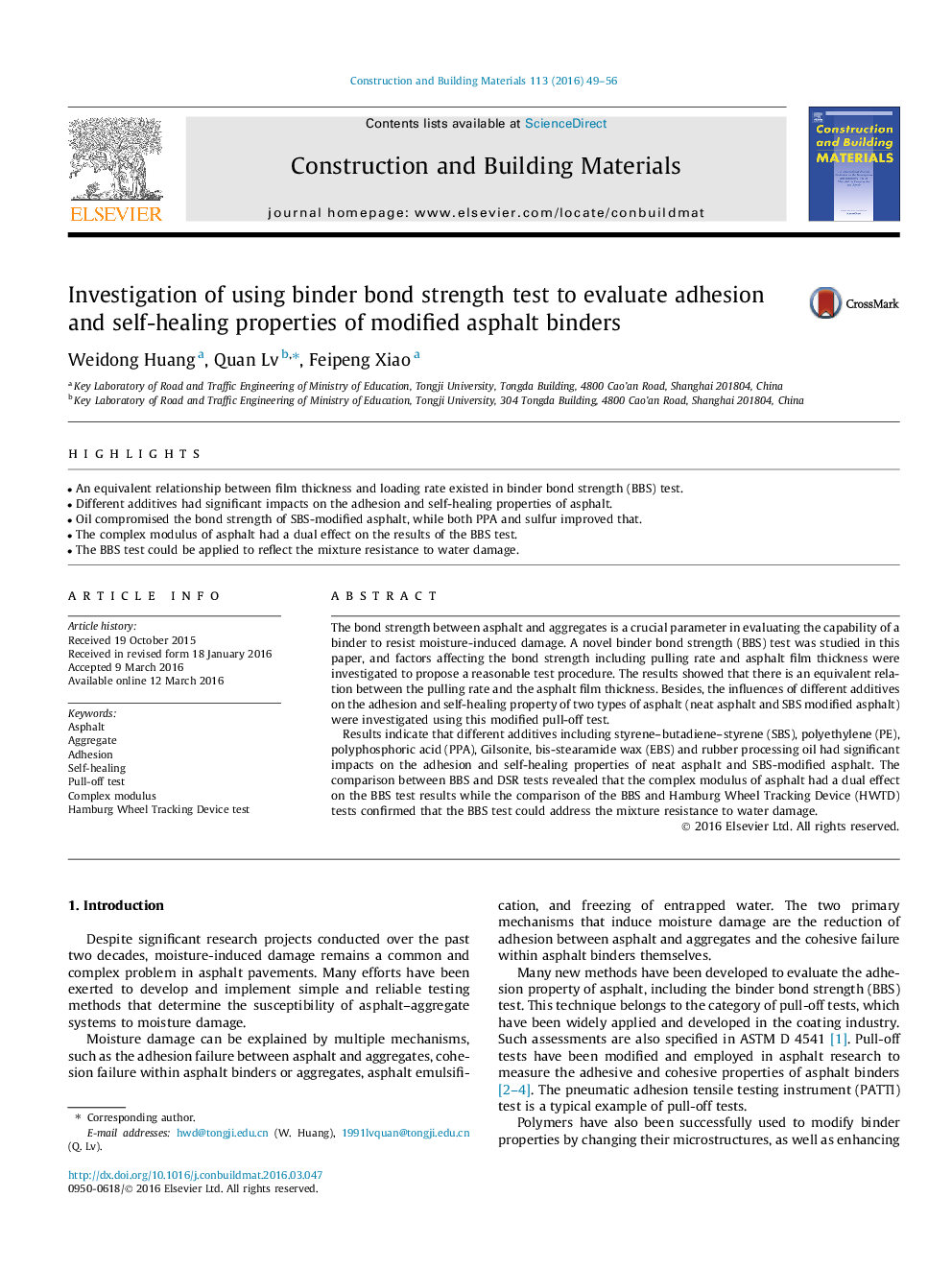| Article ID | Journal | Published Year | Pages | File Type |
|---|---|---|---|---|
| 256134 | Construction and Building Materials | 2016 | 8 Pages |
•An equivalent relationship between film thickness and loading rate existed in binder bond strength (BBS) test.•Different additives had significant impacts on the adhesion and self-healing properties of asphalt.•Oil compromised the bond strength of SBS-modified asphalt, while both PPA and sulfur improved that.•The complex modulus of asphalt had a dual effect on the results of the BBS test.•The BBS test could be applied to reflect the mixture resistance to water damage.
The bond strength between asphalt and aggregates is a crucial parameter in evaluating the capability of a binder to resist moisture-induced damage. A novel binder bond strength (BBS) test was studied in this paper, and factors affecting the bond strength including pulling rate and asphalt film thickness were investigated to propose a reasonable test procedure. The results showed that there is an equivalent relation between the pulling rate and the asphalt film thickness. Besides, the influences of different additives on the adhesion and self-healing property of two types of asphalt (neat asphalt and SBS modified asphalt) were investigated using this modified pull-off test.Results indicate that different additives including styrene–butadiene–styrene (SBS), polyethylene (PE), polyphosphoric acid (PPA), Gilsonite, bis-stearamide wax (EBS) and rubber processing oil had significant impacts on the adhesion and self-healing properties of neat asphalt and SBS-modified asphalt. The comparison between BBS and DSR tests revealed that the complex modulus of asphalt had a dual effect on the BBS test results while the comparison of the BBS and Hamburg Wheel Tracking Device (HWTD) tests confirmed that the BBS test could address the mixture resistance to water damage.
